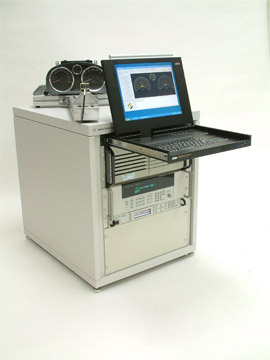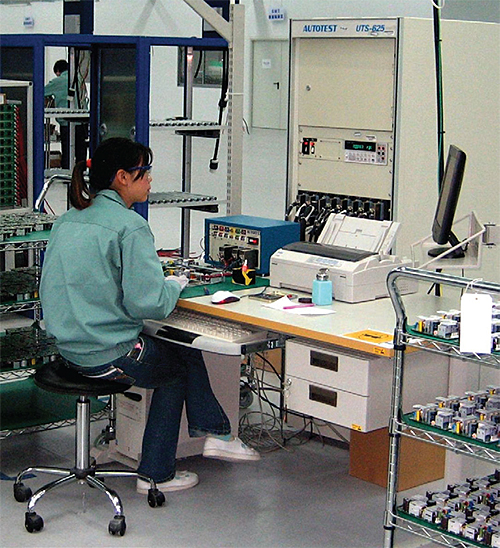Automatic Test Equipment
Automatic Test Equipment (ATE ) is a general term for measurement apparatuses that are used by the chip and electronics industry during production testing. Be tested, for example,
- Integrated circuits in wafer or chip and module testing
- Analog components in the soldered
- PCBs
ATE perform the following tests:
- Marginal testing, for example, whether the block when applying electrical signals react in any way, contact test
- Test parameters: measuring parameters such as resistance, capacitance, forward voltage, leakage current
- Function test: measuring the complete function of the block ( logical operations, reading and writing of memory chips )
Construction
The ATE has a device under test (Device Under Test, DUT) have adapted contacting, for example, probe cards for wafer test, socket for chip and module testing, spring-loaded contact pin adaptations or rigid needle adapter for PCB testing.
The electrical test signals are generated by the test electronics (test pattern generator, pin electronics, signal formatter ), supplied to the DUT and comparing the response signals in a comparator with the expected signals of a defect-free assembly. Deviates from the response signal of the expected signal, the DUT is marked as bad and rejected.
Requirements
Since the ATE must be superior to the products being tested in its performance, the devices are usually very expensive and have a relatively high proportion of production costs, up to 30 % with a very complex components. Therefore, the trend is towards ever higher parallelism (simultaneous testing of large numbers of components ) and higher speed with clock frequencies in the GHz range.
For digital circuits including flip- flops and / or RAM, the result for the ATE is the problem that the internal states can not be directly read or modified. Current building blocks of higher complexity (microcontroller, PLD ), etc. have therefore got separate test circuits can be observed with the aid of a separate diagnostic interface, the JTAG bus, the internal states and changed. ( See also Boundary Scan Test)
The testing of complex systems, such as system on a chip and mixed-signal devices ( MSIC ) with very different signals (analog, digital), at very high frequencies, is currently the biggest challenge for ATE manufacturers.
In addition, the ATE functions as so-called built-in- self-test units ( BIST) are shifted to the tested components. This reduces the cost of ATE and reduced interference from cables / contactors between ATE and component to be tested.










